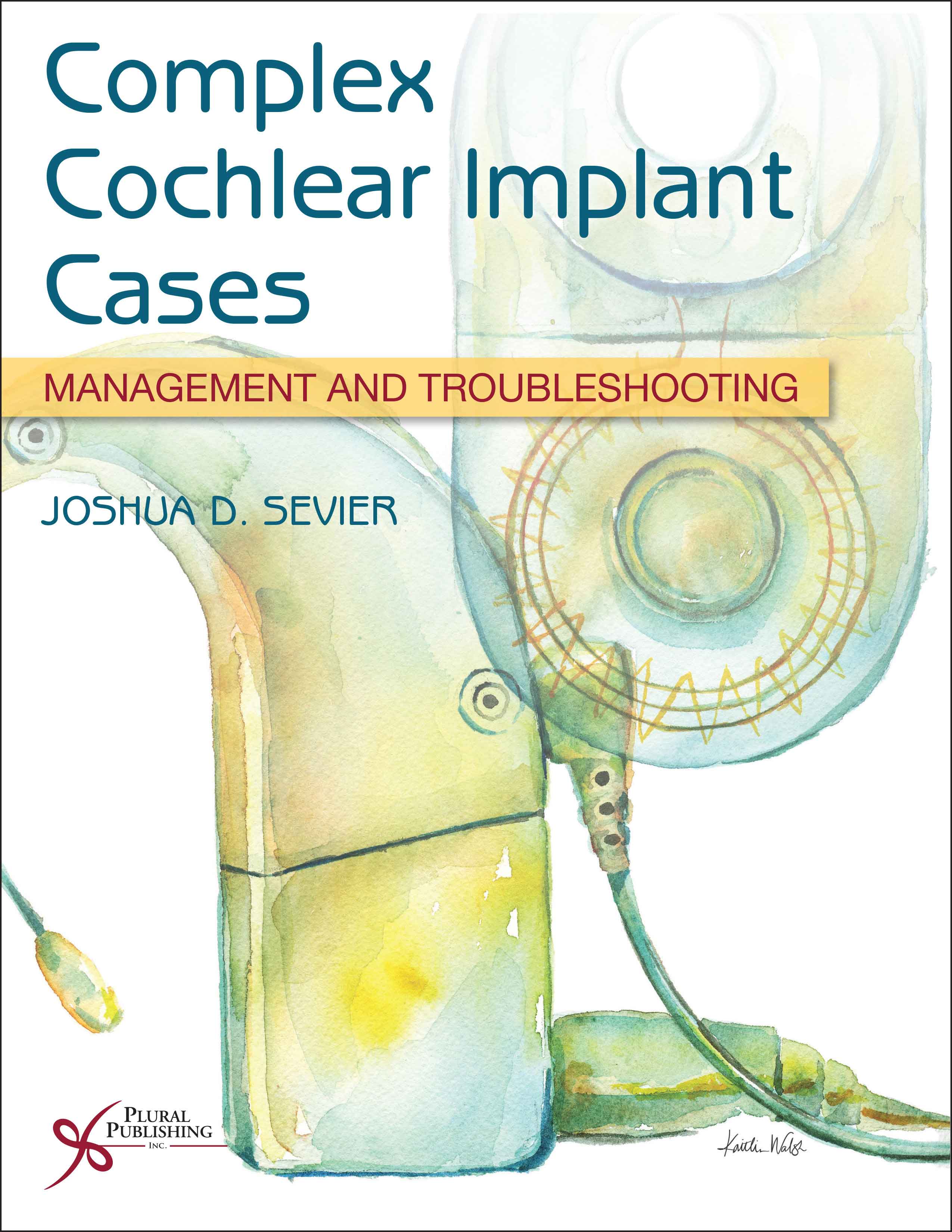
Complex Cochlear Implant Cases: Management and Troubleshooting
First Edition
Joshua D. Sevier
Details: 278 Pages, B&W, Softcover, 7" x 10"
ISBN13: 978-1-63550-383-8
© 2023 | Available
Purchase
Earn CEUs for taking the AudiologyOnline.com course based on this book.
CEUs/Hours Offered: AAA/2.35 Advanced; ACAud/23.5; AHIP/23.5; BAA/23.5; CAA/23.5; Calif SLPAB/23.5; IACET/2.4; IHS/23.5; Kansas, LTS-S0035/23.5; NZAS/3.0; SAC/23.5
Not all cochlear implant cases present in a traditional manner, which calls for audiologists to seek a second opinion in more intricate and difficult cases. Complex Cochlear Implant Cases: Management and Troubleshooting offers both new and experienced cochlear implant audiologists the opportunity to tap into the knowledge and experience of skilled colleagues who have handled unique and challenging clinical situations with current or potential implant recipients. The book includes pediatric and adult complex cases pertaining to issues in mapping because of various medical conditions, equipment issues, improper device programming, lack of objective methods, and more.
Each case starts with a clinical presentation, audiological testing, device programming, and suggested reading with research-backed references. The addition of questions for the reader offers time for the clinician to work through the case in their mind before providing answers, insights, summary, and key points.
In addition to cases, the book also includes information on common methods for troubleshooting, objective measures, and instruction, as well as supplemental information regarding programming electrical-acoustic stimulation (EAS) cochlear implants.
Key Features
- Includes pediatric and adult complex cases
- Cases are descriptive and offer highly illustrative insights
- Cases written by experienced cochlear implant audiologists working in high-volume cochlear implant centers in hospital and university settings
- 125+ figures including audiograms, mapping, and objective measures provide a visual representation to each case, helping the reader rationalize recommendations from leaders in the field
Reviews
"If you find yourself challenged by trying to manage cochlear implant (CI) patients with a variety of needs, you’re not alone. Working with cochlear implant recipients is complex and requires you to know so many things. And, the work can be stressful because patient outcomes depend greatly on the skills of the audiologist. Often, these skills include a willingness to try something new.
In this book you’ll be exposed to a variety of complex cases that will help you improve your clinical skills. You’ll learn about practices that clinicians use to alleviate problems and improve outcomes. Some of these practices are standard while many are unique steps you may never have considered.
When you finish reading this book, you may wonder 'are there any straightforward CI cases out there?' (and yes, there are…but these complex cases are so interesting!). We are fortunate these clinicians were willing to share these interesting cases and provide us with the opportunity to learn from their experiences."
–Terry Zwolan, PhD, CCC-A, Clinical Professor Emerita, Department of Otolaryngology, Head & Neck Surgery, Michigan Medicine, University of Michigan, Ann Arbor
“This book thoroughly reviews how to manage difficult cochlear implant cases in both pediatric and adult patients. It successfully incorporates real clinical cases with the goal of providing guidance and troubleshooting techniques for patients who may have similar outcomes. The supplemental illustrations provide a detailed context and are relevant to current audiology and cochlear implant technology.
…The book's intended audience includes individuals with all levels of experience working with cochlear implants, including graduate students, entry level clinicians, and advanced clinicians. Given the nature of the cases, this book would best serve those with experience in the field of audiology as it relates to diagnostic evaluations. Additionally, general knowledge of cochlear implants (including internal and external devices), cochlear implant manufacturers, and aided testing is likely needed to digest the information in this book.
This book covers programming techniques and outcome measurements on several difficult clinical cochlear implant cases. Each chapter reviews a clinical case and incorporates patient history, diagnostic testing, cochlear implant programming, and aided testing. The illustrations effectively aid in providing context and visuals for each case. The illustrations include but are not limited to audiograms, MAPs with current levels, speech scores, and telemetry.
This book successfully provides useful knowledge and strategies for managing complicated cochlear implant cases. The information can also be applied to simpler clinical cases. While evidence-based practice and research provide cochlear implant audiologists with the knowledge to make clinical decisions, this book contains multi-faceted, real-life cases. The author's reflection and perspective serve as useful tools for guidance, and the information is relatable and applicable to current cochlear implant software and technology.”
–Kiyana Sagarang, Aud.D., CCC-A, Texas Children's Hospital, from Doody’s Reviews (April 2023)
“…Complex Cochlear Implant Cases offers a tool to support and develop clinicians in this situation. Chapters are broken up into clear challenges, this book allows the reader to focus on the presenting problem at hand. The real-life situations presented here by expert CI clinicians spanning North America and Australia allow new and veteran CI programmers alike to learn from complex scenarios experienced by their peers…
Each scenario is compiled in a structured way making the case presentation, considerations, and actions clear. I particularly like the ‘case history questions and discussions’ subsections. This provides an opportunity for reflection to consider what I would do before continuing to read their approach, allowing clinicians to immerse themselves more in their development and learning. This book comprises a mixture of adult and paediatric cases and, in addition, it provides copious figures and tables making the content more transparent and easier to follow for all.”
–Rhian Bardsley, Audiology (Hearing and Balance) Centre, Manchester Royal Infirmary, in ENT & Audiology News (May/June 2023)
“…Complex Cochlear Implant Cases is a comprehensive textbook consisting of 12 case studies presented by a range of CI professionals from around the globe. The book provides both new and experienced cochlear implant audiologists with the opportunity to explore a second opinion or alternative management approach for their clients. It presents a range of challenging clinical situations with current or potential implant recipients, which will be familiar to many CI audiologists. The book covers a range of complex adult and paediatric cases with both common and unique issues pertaining to mapping for specific medical conditions, equipment issues, improper programming, lack of objective measures and more. Each case discussion starts with a background clinical presentation, initial audiological testing, device programming and case history questions, then ends with a summary of key points and references. The cases provide a comprehensive overview of the situation, the information that was collected, the changes that were made by the clinician and the rationale behind them. The case history questions are posed to the reader, challenging them to consider what they might do if they faced the same clinical situation.
… one of the most notable aspects of this book were the “red flags” highlighted in the case history questions. These encouraged me to think of the possible causes of the complex issues presented in each case. They provided examples of the questions that should be asked when encountering a more complex case and how to probe further…
Complex Cochlear Implant Cases is an excellent resource for both new and experienced audiologists seeking to engage in complex case discussions and gain insight into intricate cochlear implant scenarios. It provides a unique perspective which exposes the reader to practices they might not have otherwise considered and encourages them to strive to improve their clinical skills to ensure optimal outcomes for their clients.”
–April Young, Cochlear Ltd, from Audiology Australia (June 2023)
Preface
Acknowledgements
Contributors
Cases
Chapter 1. Role of Middle Ear Status in Cochlear Implant Programming
Jordan Alyse Coffelt and Sarah E. Warren
Chapter 2. Fluctuating Impedance and Performance
Kari Smilsky
Chapter 3. Electrode Deactivation Based on Pitch-Confused Electrodes
Sarah E. Warren and Jordan Alyse Coffelt
Chapter 4. “It’s Raining in My Head!”
Joshua D. Sevier
Chapter 5. A Case of Facial Nerve Stimulation
Meredith Holcomb and Molly Smeal
Chapter 6. Techniques for Management of Persistent Facial Nerve Stimulation and Pain in a Bilateral Cochlear Implant User
Jane Brew
Chapter 7. “The Screaming in My Head Won’t Stop”: A Case of Neurofibromatosis Type II
Joshua D. Sevier
Chapter 8. The Road to Revision: A Bilateral, Sequential Reimplantation
Brittney Sprouse and Ali Marquess
Chapter 9. Lack of Audibility Followed by Lack of Clarity
Joshua D. Sevier, Elysa Binger, and Emily A. Graves
Chapter 10. "I Only Hear Women’s Voices... No Men.”
Joshua D. Sevier and McKenzie Rosdail Kaus
Chapter 11. Programming Pediatrics: First Ensure Access, Then Optimize Speech Perception, and Finally Perfect Sound Quality
Jessica Messersmith and Brett King
Chapter 12. Overstimulation
Jordan McNair and Meredith Holcomb
Chapter 13. Advanced Evaluation and Programming in Single-Sided Deafness Cochlear Implants
Molly Smeal and Meredith Holcomb
Chapter 14. Programming Electric-Acoustic Stimulation (EAS) Cochlear Implants
Viral D. Tejani and Camille Dunn
Appendix A. Common Methods for Troubleshooting, Objective Measures, and Instruction
Joshua D. Sevier
Appendix B. Supplemental Information Regarding Programming Electrical-Acoustic Stimulation (EAS) Cochlear Implants
Viral D. Tejani and Camille Dunn
Index
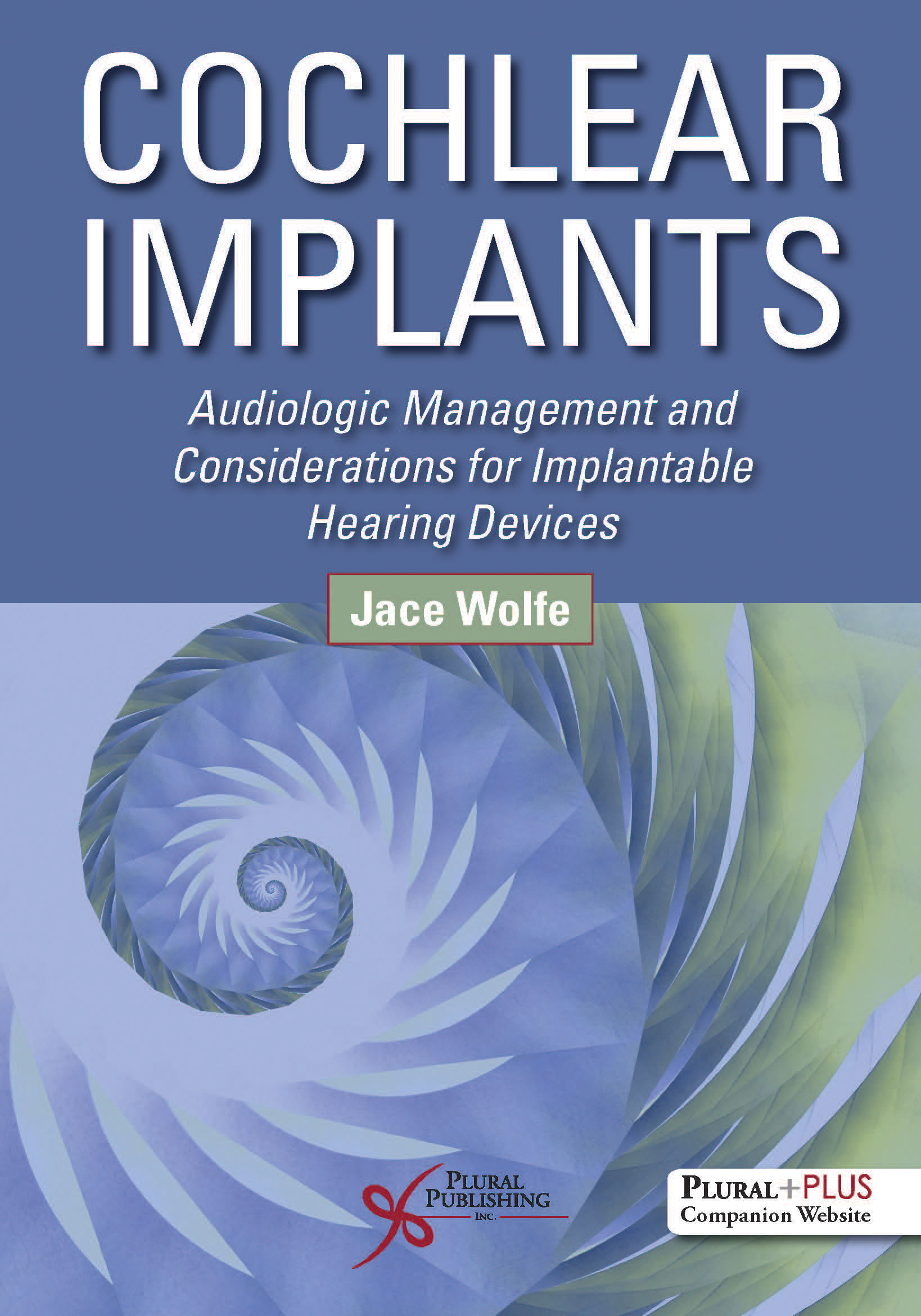
Cochlear Implants: Audiologic Management and Considerations for Implantable Hearing Devices
First Edition
Jace Wolfe
Details: 858 pages, Full Color, Hardcover, 8.5" x 11"
ISBN13: 978-1-59756-892-0
© 2020 | Available
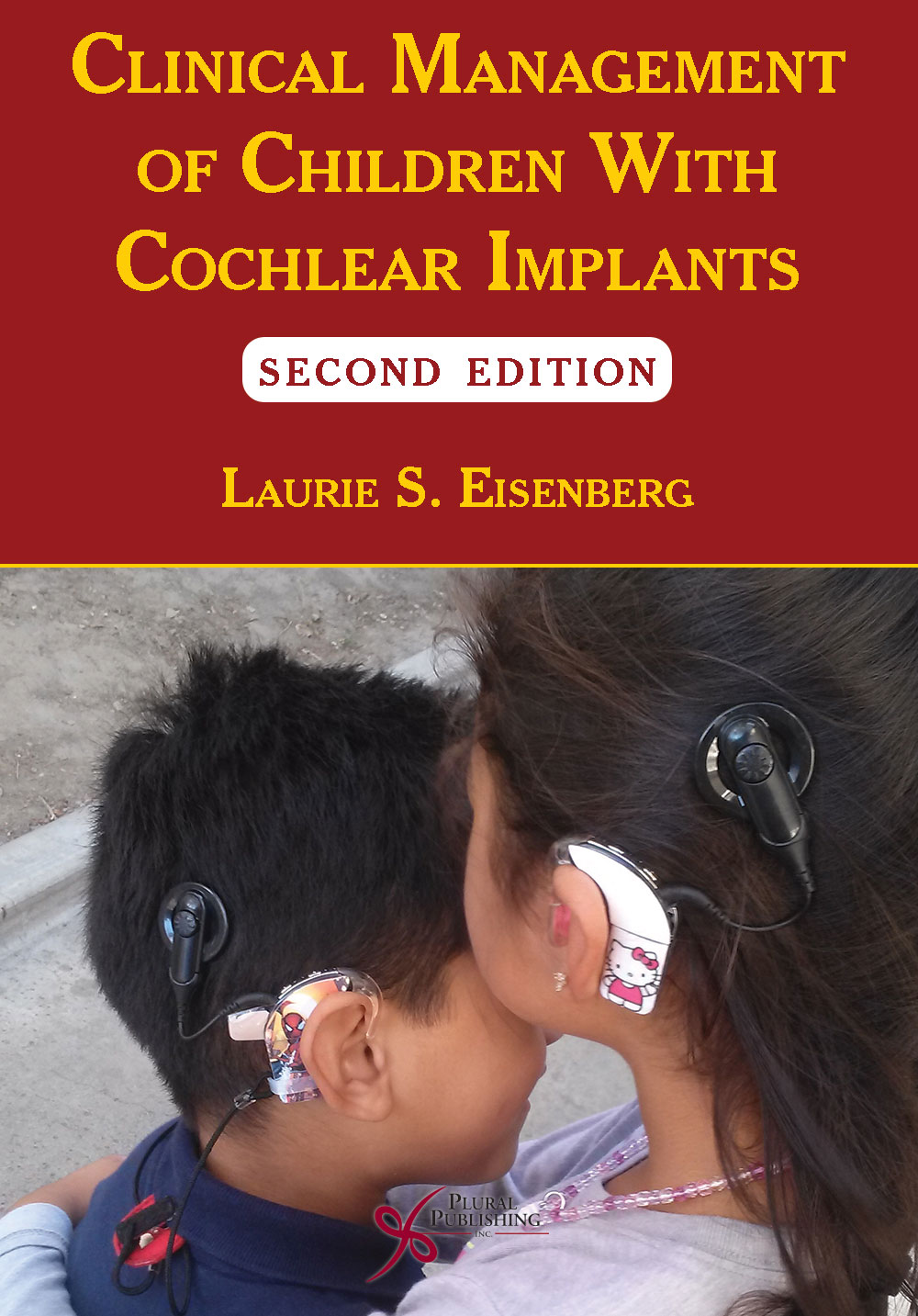
Clinical Management of Children With Cochlear Implants
Second Edition
Laurie S. Eisenberg
Details: 890 pages, B&W, Softcover, 7" x 10"
ISBN13: 978-1-59756-723-7
© 2017 | Available
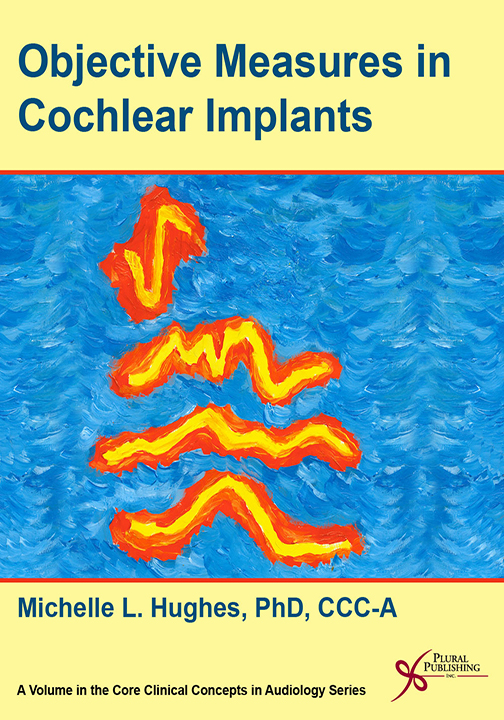
Objective Measures in Cochlear Implants
First Edition
Michelle Hughes
Details: 164 pages, B&W, Softcover, 8.5" x 11"
ISBN13: 978-1-59756-435-9
© 2013 | Available

School Professionals Working with Children with Cochlear Implants
First Edition
Patricia M. Chute, Mary Ellen Nevins
Details: 239 pages, B&W, Softcover, 6" x 9"
ISBN13: 978-1-59756-013-9
© 2006 | Available
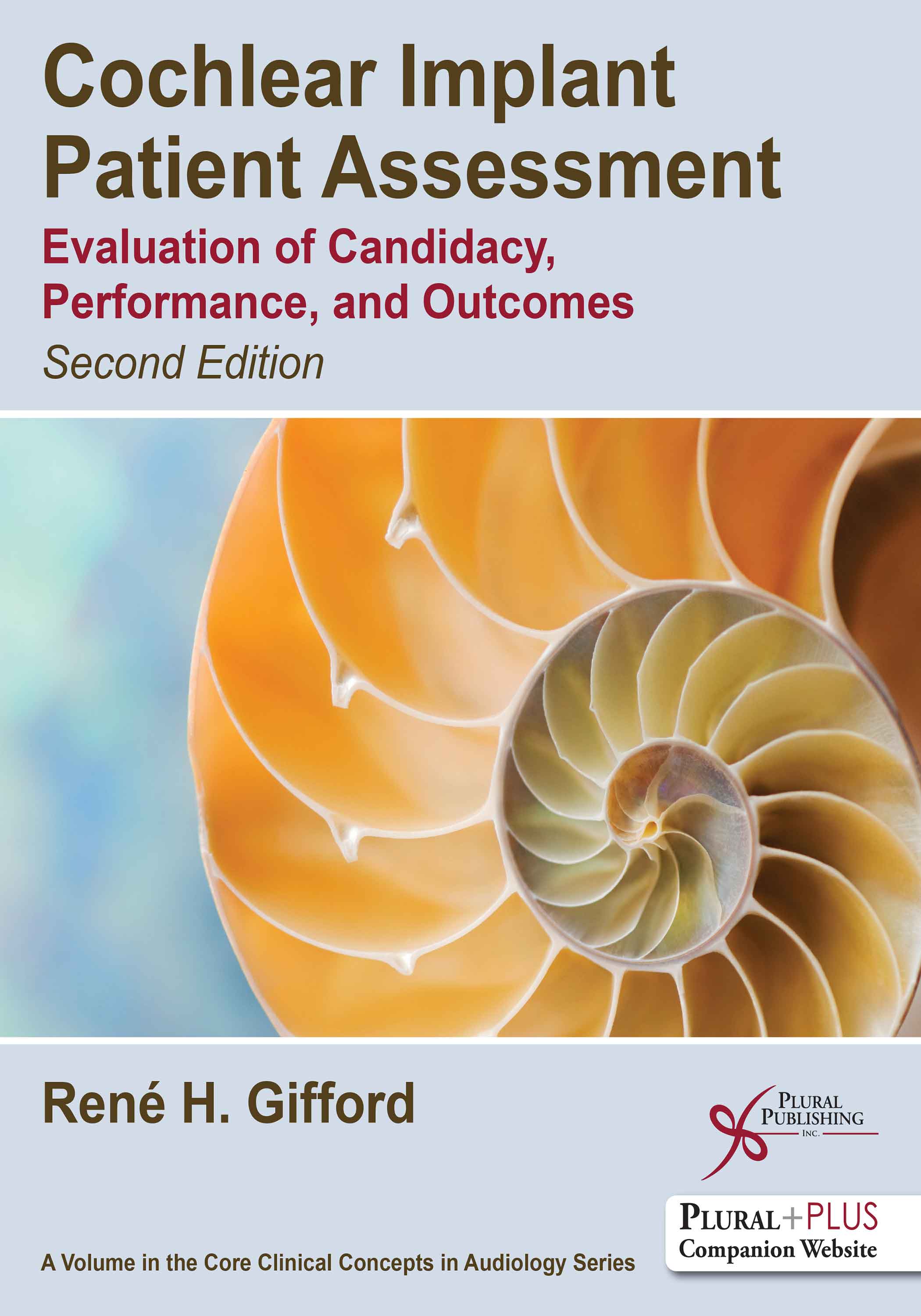
Cochlear Implant Patient Assessment: Evaluation of Candidacy, Performance, and Outcomes
Second Edition
René H. Gifford
Details: 189 pages, B&W, Softcover, 8.5" x 11"
ISBN13: 978-1-63550-128-5
© 2020 | Available

